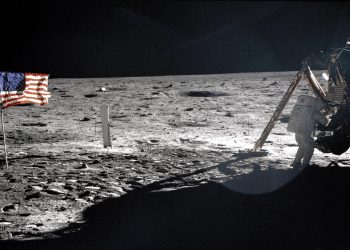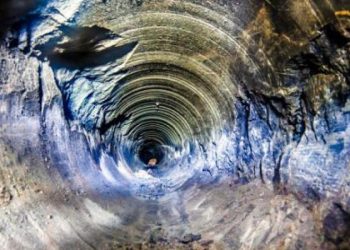Beneath the surface of Europe lies a network of mysterious subterranean passageways known as erdstall tunnels, the origins and purposes of which have long puzzled historians and archaeologists. These intricate tunnels, as explained by Popular Mechanics, are primarily found in Austria, Germany, and France, and extend for miles underground. However, historical records about them are almost nonexistent. With the help of modern technology, new research is beginning to unveil some of the secrets behind these enigmatic structures. But first things first.
What Are Erdstall Tunnels?
We can describe the so-called Erdstall tunnels as narrow, subterranean passageways, often less than a meter wide. They feature small chambers connected by extremely tight crawlspaces, referred to as “schlupfs” in German. These crawlways, sometimes just over a foot wide, require explorers to navigate in claustrophobic conditions (not for me, nope), squeezing through spaces barely large enough for a single person.
The term “erdstall” comes from the Old German words for “earth” and “place.” However, historical references to these tunnels are scarce. Theories about their function range from spiritual sites and hiding places to more speculative ideas involving ancient civilizations or even extraterrestrial origins.
How Were They Built?
Mapping these subterranean passageways has long been a challenge due to their confined spaces. As per Popular Mechanics, traditional methods, such as laser measurements or robotic devices, often fail in these cramped environments. To overcome this, a research team led by Professor Kurt Niel from the University of Applied Sciences Upper Austria developed a custom handheld device equipped with an RGB camera, gyroscope, accelerometer, and depth sensors. This allowed them to capture precise 3D images of the tunnels, even in hard-to-reach areas.
Their 3D mapping of an Austrian erdstall revealed an intricate structure, consisting of seven chambers spread across three levels. The technology helped uncover carved-out spaces that once held wooden doors, complete with slots in the walls for beams that would have barricaded the doors from within, suggesting the tunnels may have served as fortified refuges.
Researchers believe the tunnels were constructed by digging a central shaft and expanding outward to create the chambers. Once completed, the central hole was filled, leaving only the connected subterranean passageways.
Why Were These Subterranean Tunnels Created?
The purpose of the erdstall tunnels remains a subject of ongoing debate. As explained by Popular Mechanics, Luc Stevens, a researcher of similar tunnels in France, where they are called “souterrains,” suggests that these tunnels may have served practical purposes, such as storing food or providing temporary shelter during extreme weather conditions. Some souterrains feature fireplaces, oil lamps, and vent pipes that reach the surface, suggesting that people may have taken refuge in these underground spaces during harsh winters.
However, not all erdstalls are easily explained. Some feature peculiar designs, such as ring-shaped passageways that loop back on themselves. These unusual layouts raise questions about whether all erdstalls served practical purposes or if some had entirely different, still undiscovered functions.
Technology Reveals New Insights
Technological advancements have been crucial in revealing the secrets of these subterranean tunnels. Using their custom-built handheld device, Niel and his team were able to uncover details that would have otherwise remained hidden. For instance, their 3D mapping revealed slots for wooden doors, adding weight to the idea that these tunnels may have been used as secure hiding places or for defense.
Additionally, the ability to capture real-time data within these tunnels has opened up new research possibilities. The technology enables researchers to gather precise measurements in areas where traditional methods would struggle.
While modern technology is shedding light on how these tunnels were built and possibly used, many questions remain. How extensive is this network of subterranean tunnels across Europe and beyond? Were similar structures found in other regions, such as Israel or the U.K., influenced by the same techniques?
Raimund Edlinger, a key member of the research team, is optimistic about future discoveries. As revealed by Popular Mechanics, Edlinger hopes to map more subterranean tunnels across Europe and potentially find connections between distant sites. While some researchers, like Luc Stevens, believe that similarities between these tunnels may be coincidental, the possibility of larger patterns remains open to exploration.
Why It Matters
Unraveling the mystery behind Europe’s subterranean erdstall tunnels could provide valuable insights into a largely undocumented period of history. While medieval records focused primarily on the church and state, the lives of common people were often left in the shadows. Studying these tunnels may help illuminate how ordinary people lived, survived, and solved architectural challenges in their everyday lives.
In addition to its academic value, the mystery of these subterranean tunnels continues to capture the public’s imagination. With growing interest in their preservation, Popular Mechanics explains that researchers like Edlinger and Niel are exploring ways to use their technology to create replicas of the tunnels, allowing visitors to experience the claustrophobic spaces without damaging the fragile historical sites.
As more of these subterranean passageways are explored and documented, it’s hoped that the secrets of the erdstall tunnels will gradually come to light, revealing new chapters in human history that have been buried for centuries.











